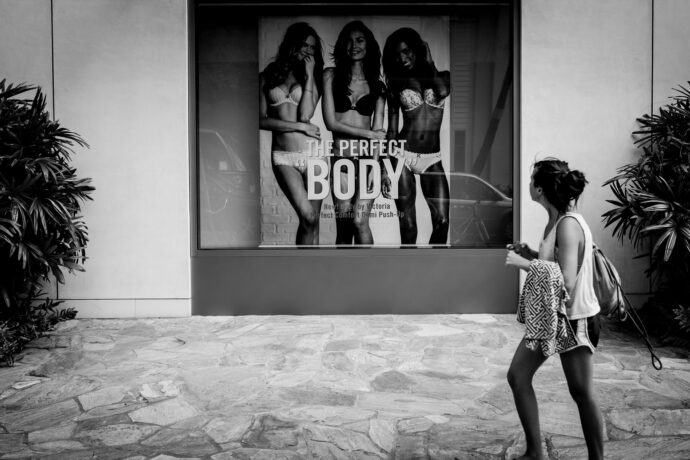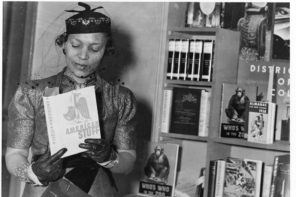What inspired you to write Shameful Bodies: Religion and the Culture of Physical Improvement?
In all seriousness, this book originated in my body—specifically in my left hip. A few years prior to the book’s conception, I’d been experiencing a lot of pain in that area. When I finally went to the doctor, x-rays revealed that there was no cartilage left in the joint and that the top of my femur was jagged and worn (it’s supposed to be smooth and round). I was forty-seven at the time, and the news that I had severely advanced osteoarthritis—and that the only way to cure the pain was a total hip replacement—felt incomprehensible and devastating. I felt as though my flesh had betrayed me. I’d “done everything right” in my adult life—e.g., exercise, fruits and vegetables, meditation, and so on. How could my body so blatantly fail me?
I lived with chronic hip pain for the next several years, postponing surgery partly out of fear that I could be that rare patient for whom something goes wrong, partly out of concern that my life was too busy to take time out for the procedure and recovery, and partly out of sadness stemming from my perception that an artificial hip signaled an irreversible loss of physical integrity. During those years, I wasn’t just frustrated that I couldn’t control the constant hurt, I was also mildly embarrassed. When people asked why I was limping, I experienced a subtle yet detectable wave of shame—as if, somehow, my “defective” body signaled a kind of moral failure.

Shameful Bodies: Religion and the Culture of Physical Improvement
Michelle Mary Lelwica
Bloomsbury Academic
January 2017
At some point, I realized that many of the difficult feelings I was experiencing in relation to my body-in-pain reminded me of the negativity I’d felt toward my body as a teenager, when I had an eating disorder. Of course, the situations were entirely different. My desire to control the arthritic pain of my middle-aged body had nothing to do with my adolescent yearning to be skinny. Yet the feeling of wanting to conquer, escape, or transcend my body was very familiar. This familiarity made me wonder whether diverse body issues like weight, chronic pain and illness, disability, and aging are somehow connected. How do we think and feel about somatic experiences that elude our absolute control? What broader cultural/religious narratives foster the idea that we can and should conquer our bodies? And what are the social and internal consequences of this idea for people whose bodies refuse to obey?
These are the questions that inspired me to write Shameful Bodies. Essentially, the book examines American culture’s preoccupation with body improvement, the dominant fantasies of physical perfection that orient the quest for improvement, the traditional religious and philosophical narratives that are tacitly embedded in this quest, and the shame many people experience as a byproduct of their particular body’s refusal to live up to the normative ideal. (Notice my preference for the word refusal—instead of failure—in the previous sentence). My analysis interrogates prominent religious/cultural norms and narratives that encourage us to go to war with our flesh by producing and tapping into a sense that there’s something wrong with our bodies, something we should be able to control, correct, or cure—whether in the form of a chronic health problem such as cancer, various ailments related to aging, a physical disability, unwanted weight gain, or some other body “problem.”
I should add that I did end up going through with the hip replacement surgery, which I’ve yet to regret. In many ways, having surgery challenged me to nuance my critique of the culture of physical improvement. How could I reconcile my suspicion toward the controlling, normalizing, and fix-it mentalities that operate in prominent discourses on health and healing with my appreciation for the pain relief I experienced post-surgery? This apparent contradiction forced me to think more carefully about what it is about mainstream approaches to a “better body” that I find problematic. Essentially, Shameful Bodies targets a specific storyline about physical improvement: one that serves the interests of global capitalism; one whose iconography creates a hierarchy of bodies that reinforce social inequities; one whose moral codes and body norms foster judgment and aggression toward people whose bodies don’t resemble the singular ideal; one whose language and rituals tell us we can/should control and efface the eccentricities of our particular bodies; one that denies the vulnerability, diversity, interdependence, and limits of embodied life, thereby encouraging us to feel estranged from—and/or at war with—our own flesh. My critique also challenges both the notion of “self” that the salvation myth of physical perfection promotes (i.e., Descartes’ sovereign, unencumbered, self-sufficient individual), and the more-better-faster culture the ideal body/self represents and serves.
What’s the most important take-home message for readers?
I’d say there are three main messages I’d like readers of Shameful Bodies to take to heart:
First, body shame is not a natural response to being physically impaired, fat, old, and/or chronically sick or in pain. Rather, such shame is a culturally conditioned reaction that reflects a confluence of religious and philosophical narratives that associate virtue with a body that’s under control—a body epitomized in the commercially-fabricated fantasy of physical perfection that pervades popular culture and that undergirds many mainstream medical and self-help discourses on health and healing.
Second, the lines distinguishing “religious” from “secular” attitudes toward physicality are far from clear. My analysis of body shame illustrates just how much traditional Christian norms and narratives have been recycled into seemingly secular forms of culture. This implies that even people who don’t identify as religious, and even discourses that claim to be entirely secular (e.g., medical, self-help, or commercial discourses) are nonetheless influenced by the beliefs, images, rituals, moral codes, and salvation myths of traditional religion. In short, religion continues to play a hidden role in shaping the feelings we have and the judgments we make about different bodies (our own and others’).
Third, institutions, products, and programs that are supposed to help us “improve” our health can be quite damaging. This is apparent in the antagonistic approach to physical improvement that commercial, medical, and self-help discourses commonly encourage. Have you ever noticed, for example, the colonial paradigm implicit in familiar calls for us to blast belly fat, fight cancer, conquer chronic pain, triumph over disability, defy aging and banish wrinkles? Once we recognize the controlling/conforming mentality that pervades the culture of physical improvement, we can begin to think about alternative approaches to health and healing—ones that honor the inescapable diversity, impermanence, interdependence, and finitude of embodied life.
Is there anything you had to leave out?
My publisher allowed me to go a few thousand words over their original word limit, but I still had to cut a number of compelling stories of people who have struggled with body shame because of internalized cultural/religious norms and narratives about weight, disability, chronic pain or illness. I also had to omit some of my analyses of examples of the culture of physical improvement. For instance, in the chapter on aging, I nixed a rather lengthy critique I’d developed of Deepak Chopra’s best-selling, Ageless Body, Timeless Mind, in which he claims that humans need not be “victims of aging, sickness, and death,” that with the right mindset, we can “defeat entropy.”
According to Chopra, “the physiology of immortality” is possible because “nothing holds more power over the body than beliefs of the mind.” The reason our flesh ages without our consent or control, he goes on to explain, is that our minds/bodies have been programed by a worldview that convinces us that it’s our destiny to grow old and eventually perish. But since we can change this worldview, aging itself is “reversible.” With this mind-over-matter mentality, Chopra invites us to imagine a “Land Where No One Is Old”—a land “where youthful vigor, renewal, creativity, joy, fulfillment, and timelessness are the common experience of everyday life, where old age, senility, infirmity, and death do not exist and are not even entertained as a possibility” (xiii, 3-6, 36, 113, 304). Interestingly, Chopra’s utopic vision bears uncanny resemblance to the heavenly realm of eternally youthful bodies Augustine imagined centuries ago (Augustine believed that bodies in heaven would be resurrected at the “perfect age” of 33—i.e., the age of Christ). You might say that Chopra’s fantasy of ageless physiques secularizes/updates Christianity’s immortality myth of resurrected bodies incorruptibly frozen in their “prime” by incorporating the modern belief that individuals are the masters of their fate. I find this to be not just fascinating, but troublesome—troublesome because the glorification of youthful bodies combined with the assumption that we can master our flesh (i.e., by stopping the aging process) leaves many people feeling inadequate or ashamed when their bodies do what bodies do as we move through time: grow old.
In addition to leaving out specific stories and analyses of popular cultural examples, I would have liked to discuss a number of other issues that are triggers for body shame because they involve physical experiences in which we have no (or limited) control. Menstruation, skin tone and complexion, and body hair are just a few examples of topics the book doesn’t delve into because the scope of issues it does cover (i.e., disability, weight, chronic pain and illness, and aging) is already impossibly broad! But wouldn’t it be interesting to examine how people’s feelings about other body issues are shaped by long-standing religious and philosophical norms and narratives, which are in varying degrees and quietly embedded in contemporary commercial, medical, and self-help discourses?
What are some of the biggest misconceptions about your topic?
In varying degrees and ways, popular culture socializes us to associate “health” with a very specific image of bodily integrity and wellness—one that’s epitomized by the bodies on the covers of magazines like Health or Men’s Health. This particular image masquerades as a universal norm. But what does it really mean to be healthy? Can a person who is living with a disability still be healthy? (I would say, of course!—though disabled bodies are not typically associated with good health in dominant commercial, medical, and self-help discourses). What about a woman with cancer? Can she be healthy on some level as well? Or a man suffering from ALS? I think our answers to such questions need to be more nuanced and complex than current definitions of “good health” and “healing” allow them to be. There is, as I suggest in the book, a difference between healing and curing. And there needs to be alternative ways of living with these body issues—ways that don’t require us to go to war with our bodies by fighting, conquering, or triumphing over whatever somatic issue eludes our control.
Perhaps one of the biggest misconceptions about good health is that you have to be thin in order to have it. Of all the topics Shameful Bodies addresses, the chapter on weight is likely to elicit the most resistance in readers because I draw on the work of scholars in the field of fat studies to challenge deeply held assumptions about body size, health, happiness, and beauty. These assumptions include the ideas that people can control their weight if they just try hard enough; that being fat is automatically unhealthy and unattractive; that larger-than-average people necessarily eat more than their thinner counterparts and probably lack control (and are thus morally weaker human beings); that losing weight is a good strategy for becoming more fit. I suspect that challenging these assumptions may trigger some readers’ disbelief—a disbelief that’s rooted in an even bigger misconception that good health is a personal achievement (in the book, I suggest that good health involves both personal and social responsibility). In the end, I call for a more nuanced approach to understanding the health/weight relationship, one that’s informed by the Health at Every Size philosophy and movement.
I also think there are common misconceptions about both health and spirituality that prevent us from seeing the relationship between the two. In the U.S. today, religion and medicine are often seen as separate spheres—mirroring Descartes’ erroneous understanding of the “mind” as independent from the “body.” I like to point out that the etymology of the term “salvation”—which comes from the Latin, salve, which means “good health” and is sometimes translated as “healing”—hints at an underlying connection between spiritual and physical wellbeing. In many ways, thinking critically about contemporary health-related issues through the lens of long-standing religious narratives and norms can move us beyond dualistic misconceptions that limit our understandings in both fields.
Did you have a specific audience in mind when writing?
The primary audience I had in mind for this book was my undergraduate students, the vast majority of whom are not majoring in religion and yet are nonetheless often curious about religion and its role in their lives and our world. Many of my students also struggle with some form of body shame, and I wanted to offer them a way of thinking about this experience that doesn’t reinforce the sense of failure and self-blame surrounding it. More broadly, I was hoping that people outside the academy—especially educated but non-specialist individuals who have experienced struggles related to disability, weight, chronic pain and illness, and aging—may find the book useful. My hope was that understanding traditional religion’s powerful yet often hidden influence on the judgments we make about diverse human bodies (our own and others’) might liberate us to be more intentional about those judgments, and to find alternative ways of pursuing health and healing.
I’m not going to lie—the book has a lot of footnotes! No doubt, it has a kind of scholarly flavor. But I tried to write it in a manner that’s accessible to those who are not experts in any of the academic fields from which I draw (i.e., religion, feminist studies, postcolonial studies, disability studies, fat studies), especially those who have struggled with some kind of body issue or another and who therefore might find it not just interesting, but helpful.
Are you hoping to just inform readers? Entertain them? Piss them off?
To varying degrees, probably all of the above. To some extent, I wanted to inform readers about the long-history of religious ideas about and attitudes towards human bodies that continues to shape popular beliefs, feelings, and attitudes about physicality today. None of the issues the book discusses (i.e., weight, disability, chronic pain and illness, and aging) have been neutral topics in the history of Christianity. And it’s eye-opening to learn how certain narratives within the Christian tradition reappear in contemporary thinking about bodies. For example, the association between disability, punishment, and sin in some biblical texts continues to linger in the abliesm and general aversion towards disabled bodies that’s prominent in society today. To give another example, the very idea of a “good body,” which is conventionally defined as young, thin, pain-free, and able-bodied, reflects historical Christian associations between mastery of the flesh and virtue.
In addition, some of the stories on which I draw to illustrate these connections—stories of people with non-conforming bodies—are quite entertaining insofar as the critical insights they suggest are often communicated through incisive wit and assumption-shattering humor. I’m thinking of Harriet McBryde Johnson’s Too Late to Die Young, or Eve Ensler’s In the Body of the World—both of which contain anecdotes that are utterly hilarious. Conveyed with intelligent humor that doubles as social critique, these authors’ accounts of their experiences in/as heretical bodies will, I hope, trigger readers’ anger at the messages our society sends virtually every body, namely, that no body is good enough.
What alternative title would you give the book?
Thank you for this question! I appreciate it because after the book came out, I started thinking that perhaps I should have given it a title that does a better job capturing the critique the book makes (about religious/cultural sources of body shame), rather than naming the problem in the title (i.e., the problem that our culture encourages us to view unconventional bodies as “shameful”). Perhaps a better (i.e., more accurate) title may have been Heretical Bodies, or perhaps Disobedient Bodies, or even Shameless Bodies (since my argument is really that no body is shameful!). Any of these latter titles would have foreshadowed my understanding of nonconforming bodies as refusing—rather than failing—to live up to the monotonous fantasy of physical perfection. I like the idea that our bodies themselves intelligently rebel against the rigidly defined, normalizing ideals that guide dominant understandings of “physical improvement.” This implies that the irregular, unconventional, and/or uncontrollable bodies that are so often seen as shameful are not only shameless, but also potentially prophetic in the challenge they pose to idolatrous definitions of health and healing.
How do you feel about the cover?
Honestly? I’m not a huge fan of it, but others have told me they really like it. The publishers worked hard to come up with an image that would not reinforce the very somatic clichés I aim to challenge. Images of bodies easily lend themselves to interpretations that are guided by pre-existing, deeply entrenched norms and narratives. I think that made the process of designing a cover especially tricky, and it explains why the cover designers for Shameful Bodies opted for a more fragmented image—one that hopefully resists conventional storylines and assumptions about physical improvement.
Is there a book out there you wish you had written? Which one? Why?
Another great question! There were many compelling books I read to build my knowledge of the various body issues I discuss in the book, several of which I wish I had written. One that stands out is Fat-Talk Nation, in which medical anthropologist Susan Greenhalgh explores the unseen costs of America’s “war on obesity” by asking: “How do heavy people feel being the object of such visceral hatred, verbal abuse, and outright discrimination?” To investigate this question, Greenhalgh had her college students write “auto-ethnographies” in which they reflected on the ways weight issues have affected their lives. This approach made me wish I’d included more stories from my own students in my book because I’ve had my students write about struggles with their bodies and many of their accounts are painfully insightful. Similarly, the student narratives Greenhalgh examines reveal the damage the anti-fat crusade inflicts in heart-breaking detail. Fat students of various colors, classes, and cultural backgrounds tell of parents warning them that they’ll never find love, success, or happiness unless they trim down. Some of them recount incidents of vicious bullying at school—e.g., a young man was called “fat, ugly piece of shit” by his peers; a young woman had trash hurled at her as she walked through the schoolyard. Large-bodied students seek refuge from such brutality by socially withdrawing—a strategy that often results in anxiety and/or depression. Students of all sizes report agonizing daily over food and body image, and many resort to dangerous weight-loss methods (e.g., drugs, starvation, compulsive exercising, vomiting, smoking) in their desperation to be thinner. Greenhalgh presents and analyzes her students’ experiences with tremendous critical insight and sensitivity, pointing out the moralizing undertones of the “war on obesity.” In fact, if I’d written the book, I would have explored more thoroughly the traditional religious norms and narratives on which the moral dimensions of the anti-fat crusade draw. But overall Fat-Talk Nation is an eye-opening analysis of the hidden consequences of the anti-fat crusade that I wish all of the war’s leaders, soldiers, and victims could read.
What’s your next book?
I have two very different projects in mind, and I’m not sure which one I’ll get to first. One is a book I feel compelled to write in the wake of Trump’s election. I’m still struggling to come to terms with the fact that so many Christians somehow managed to reconcile their spiritual values with voting for a man who in my mind epitomizes the imperial values Jesus challenged. I would write this book for a more-than-academic audience, with the aim of educating the general public about some basic assumptions regarding “religion” that most scholars take for granted. I guess this book would fall in the genre of texts dedicated to promoting religious literacy for a non-academic audience. Within that genre, I have yet to find a book that feels satisfying to me, and a few of the more popular ones bother me with their lack of attention to issues that are key for me (e.g., gender, race, religious diversity, and other social justice issues). Moreover, none of the religious literacy books with which I’m familiar seem capable of challenging the assumptions that enabled so many Christians to overlook the utter inconsistencies with Trump’s message and Jesus’s teachings.
The other book I want to write is inspired by Ta-Nehisi Coates’s Between the World and Me, in which Coates recounts to his fifteen-year-old son how America’s abusive history toward blacks continues to shape the pervasive racism that structures our society today. As I read this brilliantly heart-breaking and challenging text, which is written in the form of a letter, it occurred to me that young women in the U.S. today (female youth of all ethnic, cultural, and racial backgrounds) need a similar book that explains through a mix of storytelling, history, and critical reflection how the misogynist religious/cultural legacies of the West continue to shape girls’ and women’s experiences of their bodies today: encouraging them to go to war with their bodies; punishing them for disobeying dominant cultural body norms; rewarding them for thinking and behaving in ways that undermine or even destroy their mental, physical, and spiritual wellbeing; limiting their confidence and curtailing their substantive power and presence in the public sphere. Like Coates, I would advocate both the necessity of struggle—both internal and external—to challenge this legacy, and the possibility of finding a lifetime’s worth of meaning in that struggle, even if some suffering cannot be undone, and even if the changes I want to see in my own lifetime will likely not come to pass. As I envision it, this book would draw on the research and thinking I’ve been doing on this topic for nearly three decades now, but it would translate this knowledge for a teenage girl audience in the form of a letter—perhaps addressed to the daughter I never had (but once was).






